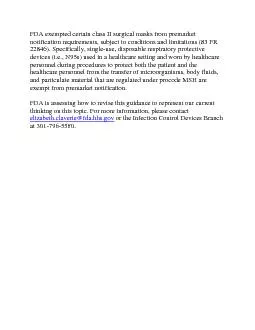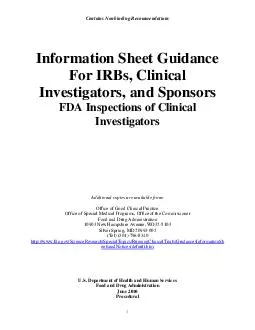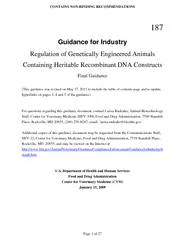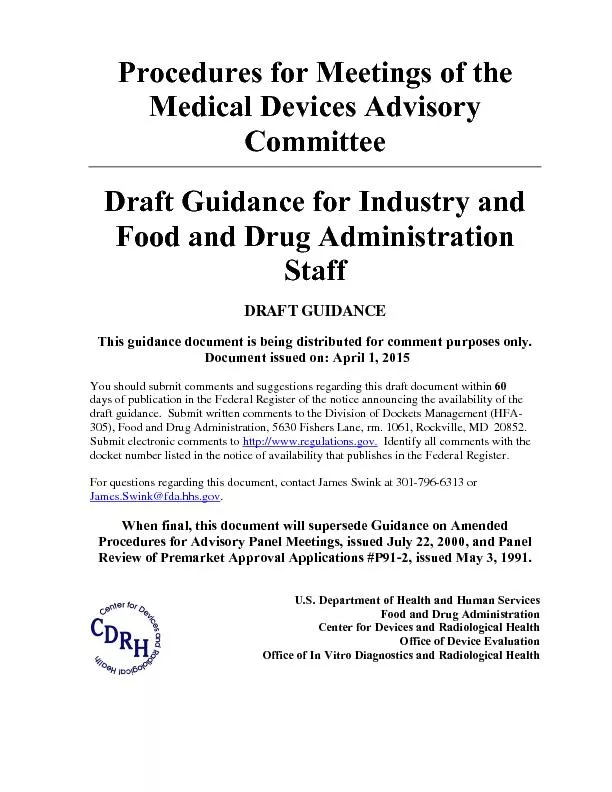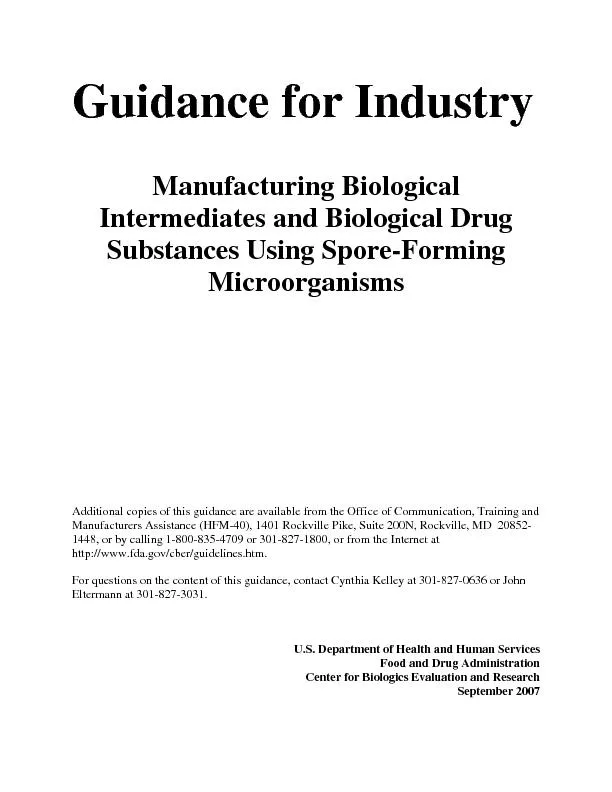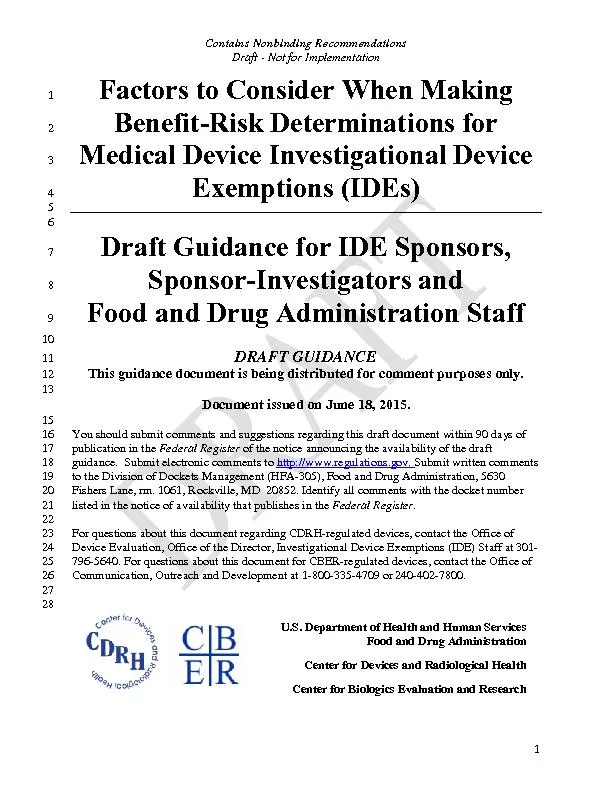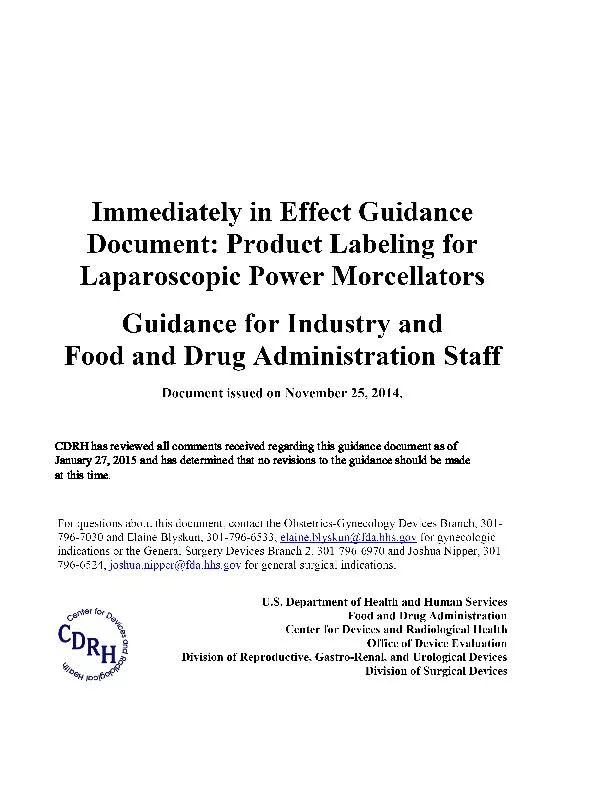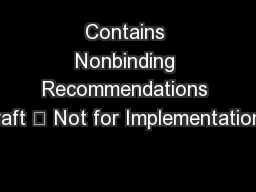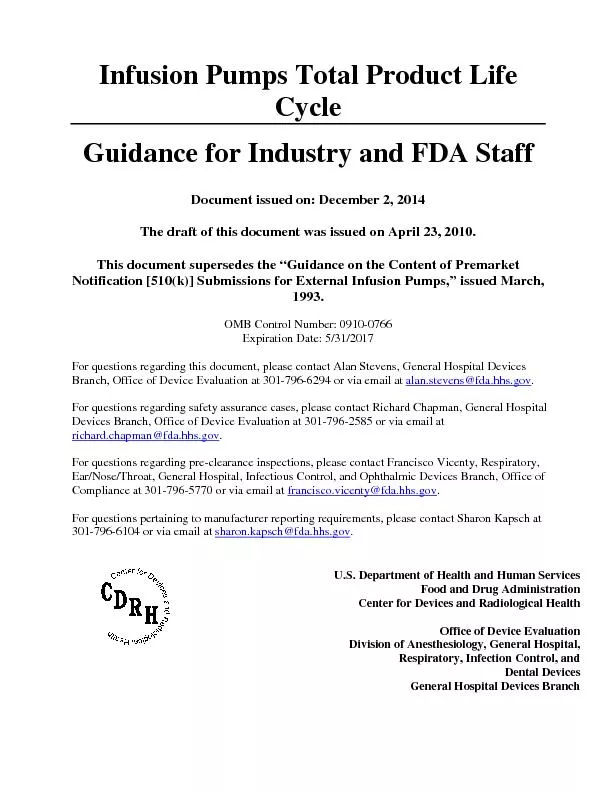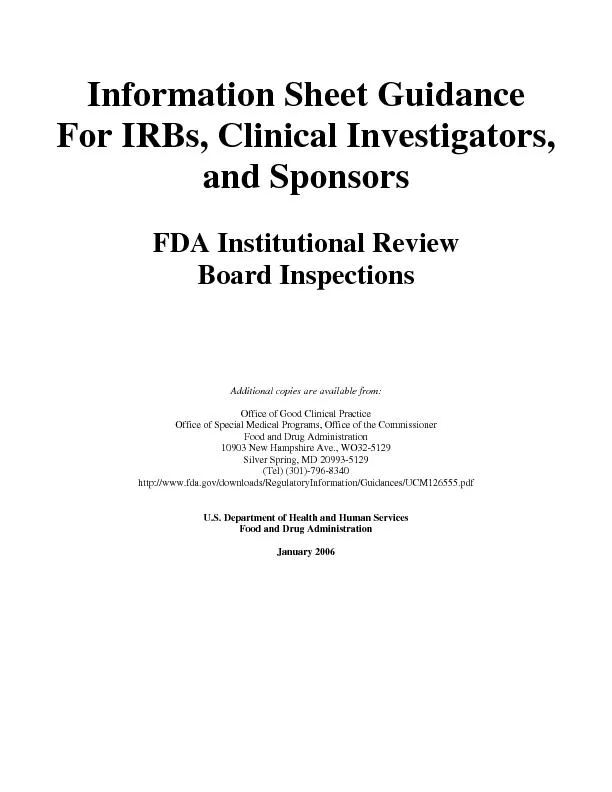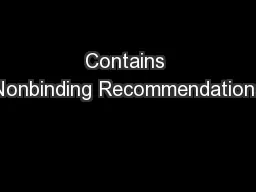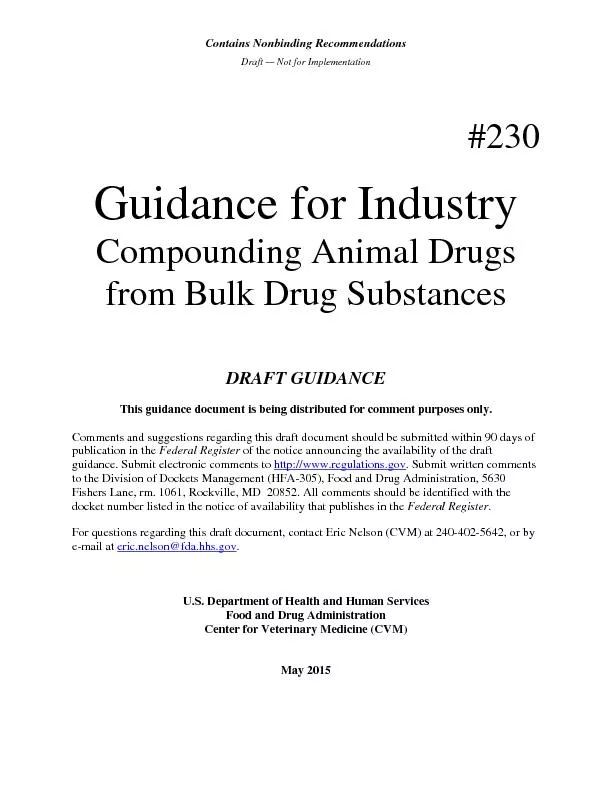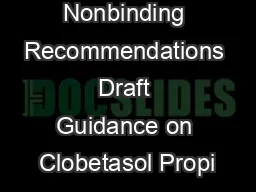PDF-Contains Nonbinding Recommendations
Author : alexa-scheidler | Published Date : 2015-09-01
Preface Public Comment Written comments and suggestions may be submitted at any time for Agency consideration to the Division of Dockets Management Food and Drug
Presentation Embed Code
Download Presentation
Download Presentation The PPT/PDF document "Contains Nonbinding Recommendations" is the property of its rightful owner. Permission is granted to download and print the materials on this website for personal, non-commercial use only, and to display it on your personal computer provided you do not modify the materials and that you retain all copyright notices contained in the materials. By downloading content from our website, you accept the terms of this agreement.
Contains Nonbinding Recommendations: Transcript
Download Rules Of Document
"Contains Nonbinding Recommendations"The content belongs to its owner. You may download and print it for personal use, without modification, and keep all copyright notices. By downloading, you agree to these terms.
Related Documents

